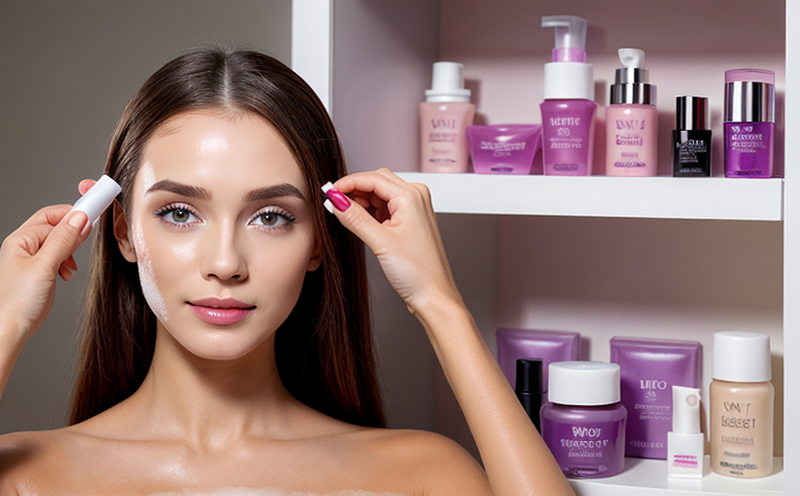Phototoxicity Testing in Sunscreens and Cosmetics
The phototoxicity testing of sunscreens and cosmetics is a critical procedure aimed at ensuring that products do not cause harmful effects due to exposure to sunlight. This test evaluates the potential for a substance to induce photosensitivity, which can lead to skin irritation or allergic reactions when exposed to ultraviolet (UV) radiation. Phototoxic reactions are distinct from photoallergic reactions and are generally more severe, as they involve the direct interaction of light with a chemical compound that has been applied topically.
The testing is essential in the consumer products sector, particularly for skincare and sun-protection products, to ensure compliance with international standards such as ISO 21362:2018. This standard provides guidance on conducting phototoxicity tests using the UVA-LED method. The test involves applying a topical product formulation onto human skin or an alternative model system and then exposing it to UVA radiation. The reaction of the exposed area is then observed for signs of irritation.
The importance of this testing cannot be overstated, as it directly impacts public health and safety. By identifying phototoxic ingredients early in development, manufacturers can reformulate products to minimize risks. This not only enhances product safety but also builds consumer trust, which is vital in the competitive cosmetics market.
- Customer Impact and Satisfaction: Ensures safer use of sunscreens and cosmetics, reducing the risk of adverse reactions.
- Competitive Advantage and Market Impact: Enhances product reputation and consumer loyalty through demonstrated safety.
The process typically involves several key steps. Initially, the formulation is prepared according to standard protocols. The test substance is then applied to human skin or an appropriate model system. Exposure to UVA radiation follows, after which the treated area is observed for signs of irritation such as erythema (redness) and edema (swelling). The results are compared against control samples that have not been exposed to the phototoxic agent.
The testing environment must be meticulously controlled to ensure accurate results. Factors such as humidity, temperature, and light conditions are closely monitored. The use of standardized equipment like UVA-LED lamps is crucial for consistent exposure. Additionally, the application method—whether topical or patch testing—is strictly adhered to per regulatory guidelines.
Phototoxicity testing also plays a significant role in the research and development phase of cosmetic products. By identifying problematic ingredients early on, companies can innovate safer formulations that meet consumer expectations for both efficacy and safety. This proactive approach not only reduces potential legal risks but also enhances brand reputation by demonstrating a commitment to high standards.
The results from phototoxicity testing are typically reported in detail within the product’s technical dossier submitted to regulatory bodies. These reports often include data on the extent of irritation, recovery times, and any other relevant observations. Compliance with such tests is not only a legal requirement but also a key factor in maintaining market access and ensuring consumer confidence.
In conclusion, phototoxicity testing is an indispensable part of quality assurance processes within the cosmetics industry. It ensures that products are safe for use under typical conditions, thereby protecting consumers from potential harm. The rigorous nature of these tests underscores the commitment to public health and sets a benchmark for excellence in product safety.
Quality and Reliability Assurance
The quality and reliability assurance of phototoxicity testing are paramount in ensuring that the results accurately reflect the real-world performance of sunscreens and cosmetics. Quality control measures include the use of calibrated equipment, strict adherence to standard protocols, and regular calibration checks for all instruments involved in the test.
Reproducibility is a critical aspect of this testing process. Laboratories must ensure that tests can be repeated with consistent results across different batches of products or even by different operators. This consistency helps build trust among stakeholders, including regulatory bodies, manufacturers, and consumers. Regular audits and internal reviews are conducted to maintain these standards.
Reliability is ensured through continuous training of staff on the latest testing techniques and best practices. This includes staying updated with international standards like ISO 21362:2018 and ASTM D7948-15, which provide guidelines for phototoxicity testing. Laboratories also invest in state-of-the-art equipment to ensure that all tests are conducted under optimal conditions.
Customer satisfaction is further enhanced through transparent communication of test results and adherence to regulatory requirements. Providing detailed reports and supporting data helps manufacturers make informed decisions about product development and compliance strategies. This approach not only meets but often exceeds the expectations set by regulatory guidelines, thereby fostering a positive reputation among stakeholders.
The reliability and quality assurance measures also extend to the storage and handling of test samples. Strict protocols are followed to ensure that samples are preserved in optimal conditions until testing is complete. This includes temperature-controlled environments and secure storage facilities to prevent contamination or degradation of the products being tested.





